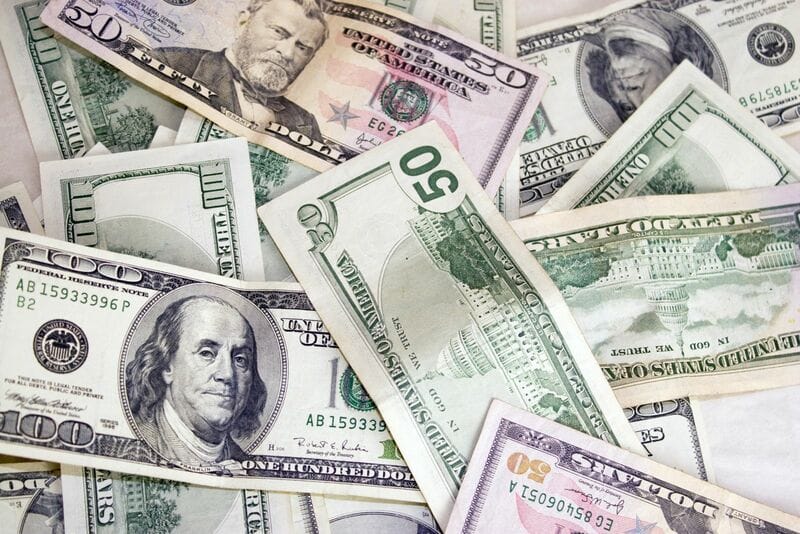
The dollar index (DXY00) on Wednesday rose by +0.31%. The dollar found support from weaker-than-expected German and UK inflation reports, which knocked European government bond yields lower and weakened the euro relative to the dollar. Gains in the dollar accelerated on the stronger-than-expected U.S. existing home sales and consumer confidence reports. The dollar extended its gains Wednesday afternoon as stocks turned lower, boosting liquidity demand for the dollar.
Wednesday’s U.S. economic news was better than expected and supported the dollar. Nov existing home sales unexpectedly rose +0.8% m/m to 3.82 million, stronger than expectations of a decline to 3.78 million. Also, the Conference Board U.S. Dec consumer confidence index rose +9.7 to a 5-month high of 110.7, stronger than expectations of 104.5.
Comments on Wednesday from Philadelphia Fed President Harker were slightly hawkish and bullish for the dollar when he said the Fed should begin to reduce interest rates, but "we don't have to do it too fast, and we're not going to do it right away."
The markets are discounting the chances for a -25 bp rate cut at 12% for the next FOMC meeting on Jan 30-31 and at 87% for the following meeting on March 19-20.
EUR/USD (^EURUSD) on Wednesday fell by -0.31%. The euro was under pressure Wednesday on signs of easing price pressures in Europe that are dovish for ECB policy after the German Nov PPI fell more than expected and UK Nov CPI rose less than expected. Losses in the euro were limited after the Eurozone Dec consumer confidence index rose more than expected to a 5-month high.
German Nov PPI fell -0.5% m/m and -7.9% y/y, weaker than expectations of -0.3% m/m and -7.5% y/y.
The German Jan GfK consumer confidence index rose +2.5 to a 5-month high of -25.1, stronger than expectations of -27.0.
Eurozone Nov new car registrations rose +6.7% y/y to 886,000, the sixteenth consecutive month registrations have increased.
The Eurozone Dec consumer confidence index rose +1.8 to a 5-month high of -15.1, stronger than expectations of -16.3.
Swaps tied to ECB meeting dates are discounting the chances for a -25 bp rate hike at 6% for the January 25 ECB meeting and 45% for the March 7 meeting.
USD/JPY (^USDJPY) on Wednesday fell by -0.10%. On Wednesday, the yen moved higher against the dollar on a slump in T-note yields. The yen also moved higher after Barclays said a passive month-end rebalancing shows “strong” signs of dollar selling against all the dollar’s major peers, including the yen. The upside in the yen was limited after the 10-yer JGB bond yield fell to a 4-1/2 month low Wednesday at 0.555%, weakening the yen’s interest rate differentials.
Japanese trade news was weaker than expected and bearish for the yen after Japan Nov exports unexpectedly fell -0.2% y/y, weaker than expectations of +1.4% y/y. Also, Nov imports fell -11.9% y/y, weaker than expectations of -8.6% y/y.
February gold (GCG4) Wednesday closed -4.40 (-0.21%), and Mar silver (SIH24) closed +0.310 (+1.27%). Gold and silver prices Wednesday settled mixed, with silver climbing to a 2-week high. A stronger dollar Wednesday was bearish for metals prices. However, lower global bond yields Wednesday limited losses in gold. Also, weaker-than-expected German and UK inflation reports are dovish for central bank policies and bullish for gold as a store of value. Silver prices found support Wednesday from an unexpected increase in U.S. Nov existing home sales and an increase in Eurozone Nov new car registrations for the sixteenth consecutive month, signs of strength in industrial metals demand.
On the date of publication, Rich Asplund did not have (either directly or indirectly) positions in any of the securities mentioned in this article. All information and data in this article is solely for informational purposes. For more information please view the Barchart Disclosure Policy here.






